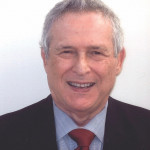After several years of being a freelance reporter for a number of New York daily newspapers, I was offered a full-time job at one of them. But it wasn’t as a reporter. I was assigned to a news desk, where I had to read all of the competing newspapers to see if they had any stories my publication missed, and, importantly, also to suggest new approaches to those articles. I learned quite a bit from reading seven dailies each day.
When I became an account supervisor after transitioning to our business, I continued reading those publications and suggested to people reporting me to do so, telling them there were many lessons they would learn that would make them better PR practitioners. Doing so, I said, would improve their writing by seeing how different reporters cover the same story but write them differently; the various sections of a newspaper would demonstrate how the same story can be approached differently; it would familiarize them with the type of stories that appeal to different journalists, and, importantly, it would provide lessons that might prevent the PR person from making suggestions to clients that could result in negative media coverage.
In this column, I’m listing a few examples that resulted in negative media coverage for clients in 2021.
Situation: “Democrats Appear Resigned to Shelve Social Spending Bill Until 2022,” read a New York Times headline on December 16
The article was about how the Democrats self-imposed deadline to advance a bill before Christmas would not happen because of the opposition of Sen. Joe Manchin.
Lesson to remember and relevance to our business: A sure way to disappoint a client is by promising that a project will be completed by a certain date and then missing the deadline. The better ways is to give the client an estimated date of when the project will be completed. What I recommend is saying that the work will reach the client by the end of an agreed upon week.
Situation: “Ex-Washington Employees Want Inquiry Made Public,” read a headline in the October 27 New York Times
The article was about the National Football League’s keeping its findings into “the sexist and misogynistic culture” of the Washington Football Team secret. It said that the investigator was asked to make an oral presentation of her findings, instead of a written one.
Lesson to remember and relevance to our business: There are three important lessons that this story reveals: 1) In sensitive matters, person-to-person discussions should replace written communications. 2) But there is no assurance that doing so will prevent insiders from speaking out. 3) If you’re questioned by investigators about a scandal, always tell the truth. Withholding information can result in criminal charges against you, even if you were an innocent bystander.
Situation: A headline in the Wall Street Journal on August 24 read “FAA Launches Review of Boeing.”
The article was about Boeing employees complaining that “they encountered difficulties in being transparent with regulators” about safety issues.
Lesson to remember and relevance to our business: PR people who work on controversial clients should always be truthful, even if pressured by agency higher-ups to hedge the truth. Because if an investigation ensues and finds that you have been untruthful, top executives of the agency are sure to attempt to put the entire blame on you.
And a headline that provides career advice:
Situation: A March 8 Wall Street Journal column was headlined, “Job Searching? Here Is Advice for Standing Out.”
The article gave advice on the standard methods of applying for a position according to employment specialists and suggested how a person should act once “your resume clears robots and recruiters.”
Lesson to remember and relevance to our business: What I found missing was any out-of-the-box thinking in the article. So, here are some techniques to try that are different from the standard advice.
Do not use one standard resume. Customize it for each company you will send it to. But don’t send it before you do the following:
- Research the company’s past and current history.
- Write a personalized letter to its CEO, president and other high executives of the company explaining why you admire the company and why you want to work for it. Give examples that you have learned from your research with different ways you might have approached them.
- Include in the letters why you believe you can be of value to the company. If possible, and applicable, obtain short letters from your communication school teachers and supervisors of organizations that you have volunteered for extolling your character and good work. If you have previous work experience explain why you’re seeking new employment and provide names and titles of people at your previous company (ies) who are willing to vouch for your ability. Don’t give the names of H.R. personnel, only that of supervisors and other employees who you trust.
- Include any recommendations with the letter and your customized resume.
- Be certain to provide day, night, weekend and holiday contact information.
- In the letter, ask if the person you are sending it to would be kind enough to have someone interview you. (Each of the letters should be personalized, not cc’s, but always contain the names of others to whom you have sent letters.) At the very least, your correspondence will be read by an executive secretary or assistant who will forward it to personnel, and not be spit out by none-human AI systems. But it also has the possibility of being read by the CEO, president and the other executives of the company. This isn’t the usual method of obtaining a job interview in this computer-driven society. It provides a human touch, the way it was before algorithms separated you from the standard routine suggested by employment advisors. That’s why it might work.
Another employment article in the WSJ was headlined “The Millions of Resumes Employers May Never See.” This story in the September 4-5 edition explained why “Automated-hiring systems can exclude desirable candidates as demand for labor rises.” So don’t let inhuman machines decide that you don’t qualify for a position. Give it the human touch.
Another reason why I recommend the personal letter approach when job hunting is because it assures that your letter will reach the legitimate company it was addressed to. On September 9, “That Great Job Offer? It May Be a Scam” headlined a full page article in the WSJ. The article said that employment-search sites, including Linkedin and Indeed, are not immune from posting fake job offers “costing victims a lot of money.”
Situation: A lengthy story beginning on page one of the December 27 Wall Street Journal, and continuing for about three quarters of an inside page, was headlined, “AT&T Cuts Hit Retiree Benefits.”
It detailed how AT&T cut retiree life insurance and death benefits while keeping it intact and subsidizing life insurance for select executives, who refused to comment about the situation. The paper reported that “The executives declined to comment through an AT&T spokesman.”
Lesson to remember and relevance to our business: High-ranking executives should never refuse to comment on a story that is being investigated by a major news outlet, especially when asked by the country’s leading financial publication. Doing so gives the impression of a cover-up.
Situation: On December 27, a New York Times headline read, “Dubious Advice From TV Doctor In Senate Hunt.”
The article was about how Dr. Mehmet Oz, who offered unproven and suspect medical advice on television, is now running in the primary for a U.S. Senate seat in Pennsylvania as a Republican, and how his claims were criticized by other physicians.
Lesson to remember and relevance to our business: PR people must assume that once a client has received negative publicity it can be revived at any time and a defensive strategy should always be on the shelve to be used if needed.
Situation: On December 27, a Wall Street Journal article was headlined, “Olympics-Themed Ads Become Tricky.”
The story was about how advertisers are “treading carefully” because of the criticism of China’s human rights record. On December 28, the paper had a story titled “Shiffrin’s Positive Test Is Warning for Olympics.” This article told how the U.S. skiing star, who was featured in NBCUniversal’s promotions of its Beijing Winter Olympics, tested positive for Covid.
Lesson to remember and relevance to our business: Reporters for both stories asked NBCUniversal to comment. NBC refused to do so each time, giving the impression that the network is either refusing to acknowledge negative or controversial aspects associated with its coverage of the games in a country accused of human rights abuses during a pandemic, or it doesn’t know how to respond to the negative happenings or hopes that by not responding negative stories would disappear. But what NBC’s none response to negative stories has shown, thus far, is that they are unprepared for the negative coverage even though they had more than a year to formulate a defensive strategy. Regardless of the client, each program sent to a client should include a suggested PR strategy if a crisis occurs. It should be send as an addendum with a stand-alone budget.
And my personal advice to young and wannabe PR pros: What these and all other stories in newspapers show is that the most important aspect of a news story is facts. My suggestion is to deep six the PR tenet that says journalists and producers don’t have the time to read lengthy pitches. I always craft my pitches as mini-feature stories that show the different way a story can be handled. And I never have been told that my pitches were too long. So make certain that all your pitches contain facts and don’t worry about the length of it. It’s not the length of the pitch that makes it attractive to journalists; it’s the information it contains.








